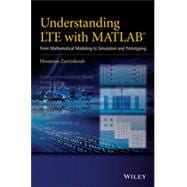An introduction to technical details related to the Physical Layer of the LTE standard with MATLAB®
The LTE (Long Term Evolution) and LTE-Advanced are among the latest mobile communications standards, designed to realize the dream of a truly global, fast, all-IP-based, secure broadband mobile access technology.
This book examines the Physical Layer (PHY) of the LTE standards by incorporating three conceptual elements: an overview of the theory behind key enabling technologies; a concise discussion regarding standard specifications; and the MATLAB® algorithms needed to simulate the standard.
The use of MATLAB®, a widely used technical computing language, is one of the distinguishing features of this book. Through a series of MATLAB® programs, the author explores each of the enabling technologies, pedagogically synthesizes an LTE PHY system model, and evaluates system performance at each stage. Following this step-by-step process, readers will achieve deeper understanding of LTE concepts and specifications through simulations.
Key Features:
• Accessible, intuitive, and progressive; one of the few books to focus primarily on the modeling, simulation, and implementation of the LTE PHY standard
• Includes case studies and testbenches in MATLAB®, which build knowledge gradually and incrementally until a functional specification for the LTE PHY is attained
• Accompanying Web site includes all MATLAB® programs, together with PowerPoint slides and other illustrative examples
Dr Houman Zarrinkoub has served as a development manager and now as a senior product manager with MathWorks, based in Massachusetts, USA. Within his 12 years at MathWorks, he has been responsible for multiple signal processing and communications software tools. Prior to MathWorks, he was a research scientist in the Wireless Group at Nortel Networks, where he contributed to multiple standardization projects for 3G mobile technologies. He has been awarded multiple patents on topics related to computer simulations. He holds a BSc degree in Electrical Engineering from McGill University and MSc and PhD degrees in Telecommunications from the Institut Nationale de la Recherche Scientifique, in Canada.
www.wiley.com/go/zarrinkoub








